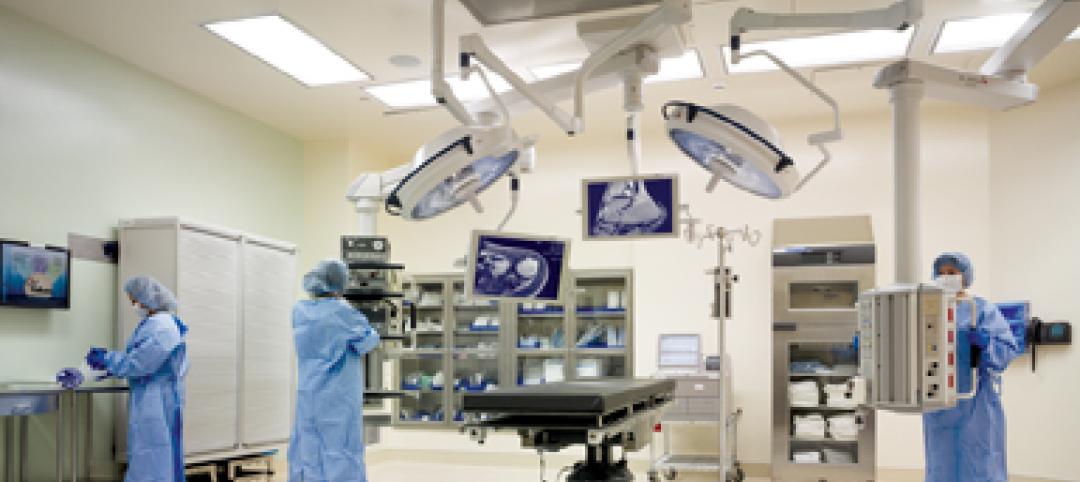As the healthcare system grows, securing these facilities becomes ever more challenging. Increasingly, medical providers have multiple facilities within their networks, making traditional keying systems and credentialing impractical.
Expensive wired access control for select high-security doors combined with old-fashioned keyed locks was a step in the evolution of facility security, but this provided very little visibility into who used those doors. Replacing traditional keyed doors with wireless access was the natural outgrowth of this inefficient, hybrid solution.
Kyle Pfeiffer, Industry Solutions Leader—Healthcare of SALTO Systems, notes, “Security remains at the forefront of decision-making in healthcare, driving technology for access control to evolve. By integrating keyless entry into an existing infrastructure, healthcare professionals are better equipped to control the flow of people entering or exiting the premises without impairing efficient movement.”
Physical Keys: Impractical and Expensive
While high-security areas may require wired electronic systems, there still exists the problem of physical locks and keys on all the other doors. Pfeiffer says, “Most offices within medical facilities are still using mechanical keys, which is not an effective way to secure or protect information in those areas.”
Moreover, managing physical keys is costly. He cites the example of doctors checking into a working suite at the hospital for an extended time period. “They hardly ever return the suite’s physical keys when checking out. Those locks then need to be replaced for security purposes,” he says, which is an expensive undertaking. “Doors that use physical keys and locks can cost facilities up to six figures each year just to manage and replace them.”
However, the smart technology used with wireless access allows for a quick and easy credential change made by a security administrator when the physician leaves, without requiring that the lock itself be switched out.
Pfeiffer notes that installing wire-free locks like those in SALTO’s Virtual Network (SVN) is an easy and cost-efficient alternative to mechanical keying systems. “They don’t require running wires and are easy and inexpensive to install. Replacing mechanical locks with SVN technology is an investment that pays for itself in less than a year and provides significant savings every year thereafter.”
The Benefits of Wireless Access Control
A major benefit of keyless access control is that all doors are managed on a single system, without the problems of handling different types of locks and multiple credentials. This allows for efficient management of foot traffic and identification of unwanted visitors.
Staff members also benefit. Medical professionals have access to different areas, floors, buildings and offices without fumbling around with multiple physical keys or managing different credentials. Being able to add more keyless entry points also makes matters easier for security and IT staff, while providing them with increased visibility into access data. They also have the ability to quickly manage an urgent situation or change staff credentials.
Finally, a keyless access system like SVN allows for the growth of medical systems. As large healthcare complexes add clinics, buildings and locations, wireless access control manages both interior and exterior doors on a single system, saving money while increasing security and convenience.
The Future of Wireless Access Control
Pfeiffer observes, “Within any healthcare facility, leadership has the responsibility to regulate areas where patient records are kept. Keyless systems improve security, thereby ensuring compliance and patient privacy.”
Maintaining these high standards in order to meet regulatory standards like HIPAA will continue to drive the technology of wireless access control. Its future in healthcare security not only brings with it the benefits of meeting patient privacy needs, but also provides significant cost control and scalability for future growth.
Related Stories
| Aug 29, 2012
BOND completes South Cove Community Health Center
$11 million, 21,000 square foot community health center opens in Quincy, Mass.
| Aug 24, 2012
KLMK Group forms strategic alliance with Taylor Construction Management
KLMK's expertise in the capital delivery process and TCM's global platform combine to provide an integrated solution with an unparalleled impact for health care related industries.
| Aug 24, 2012
Study predicts how health economic, delivery and buildings play a role in the next decade
Study also finds accountable care organizations, pay-for-performance and aging population will have greatest impact over next five years.
| Aug 9, 2012
DSGW Architects welcomes new employees
Three new employees located in DSGW's Duluth office.
| Aug 7, 2012
McCarthy tops out LEED Platinum-designed UCSD Health Sciences Biomedical Research Facility
New laboratory will enable UCSD to recruit and accommodate preeminent faculty.
| Jul 25, 2012
EwingCole adds healthcare director to D.C. office
Schultz brings over 25 years of proven experience in planning and designing healthcare, medical research, and government medical facilities.
| Jul 25, 2012
Hill International selected as project manager for two Abu Dhabi hospitals
The two hospitals have a combined estimated project value of approximately AED 784 million ($213 million).
| Jul 20, 2012
2012 Giants 300 Special Report
Ranking the leading firms in Architecture, Engineering, and Construction.
| Jul 20, 2012
3 important trends in hospital design that Healthcare Giants are watching closely
BD+C’s Giants 300 reveals top AEC firms in the healthcare sector.
| Jul 19, 2012
Construction begins on military centers to treat TBI and PTS
First two of several centers to be built in Fort Belvoir, Va. and Camp Lejeune, N.C.


















